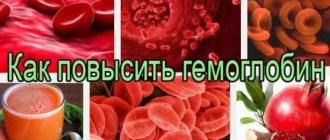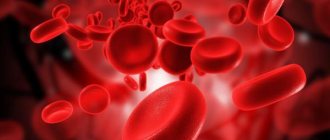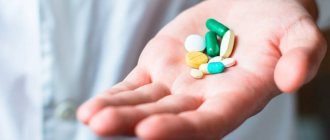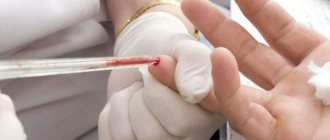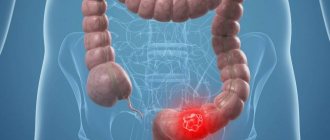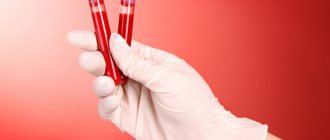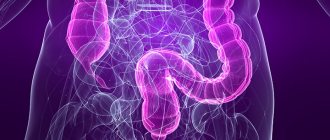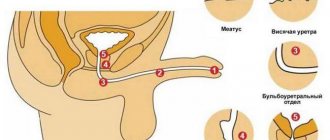Effective methods for lowering hemoglobin at home
Hemoglobin is a protein that transports oxygen to the tissues and organs of the human body. Under certain circumstances, its concentration deviates from the norm. More often the amount of this protein is reduced than increased. High hemoglobin is dangerous. Blood clots form in thick and viscous blood. People with high hemoglobin levels need to know how to lower hemoglobin using medicines and folk remedies.
Traditional fight against high iron content
In order for the results of the blood test to be adequate, you should prepare for submitting biological material for research.
Two or three days before going to the laboratory, you need to give up protein foods and stop taking various medications (of course, we are not talking about those medications that are classified as vital). The last meal before the test should be no earlier than eight to ten hours.
With a slightly elevated hemoglobin level, the fair sex is not prescribed any specialized medications, especially when the women’s age does not exceed forty years.
For those older than this age threshold, special pharmaceutical drugs are recommended more often, as they believe that their bodies need more powerful support.
The most effective way to combat slightly elevated hemoglobin (from one to thirty points) is diet. As part of this diet, you should follow simple but important rules.
To begin with, you should avoid any fried, smoked or overly salty foods.
In addition, you need to drink more liquid - both plain clean water and herbal teas, unsweetened juices, compotes and jelly. It is better to refrain from drinking alcohol, black tea and coffee.
Foods that people suffering from high hemoglobin should not eat:
- red meats and fish;
- fatty dairy products;
- butter;
- animal by-products (especially liver);
- fruits, vegetables and berries that have a red tint.
You should eat nuts, plant seeds, and legumes with caution.
If hemoglobin is increased by more than twenty points, then patients may be prescribed special medications, the main function of which is to thin the excessively thick blood.
The most common drug included in the category of these drugs is the usual “Aspirin”.
Please note: you should drink it in a certain amount and according to a special regimen suggested by your doctor. Self-medication is dangerous.
READ What are the functions of hemoglobin in the body?
Drugs with similar functions and more advanced compositions are such drugs as Trental, Cardiomagnyl and Curantil.
Each of them, if taken correctly, helps prevent the risk of thrombosis caused by high hemoglobin levels in the blood.
Causes
The permissible concentration of protein containing iron is:
- in men – 135–170 g/l;
- in women – 120–140 g/l.
At the age of 40–50 years, protein levels change slightly: in women, hemoglobin rises to 160, and in men – to 180 g/l. After 50 years, its level drops in men to 150, and in women to 138 g/l.
In children, the amount of hemoglobin ranges from 110–230 g/l. If the child is a newborn, in the first two days its concentration reaches 230 g/l. In infants under one year old it is 90–140, in children under 2 years of age – 105–145, in children 3–15 years old – 110–155 g/l. From the age of 16, the hemoglobin concentration is the same as in adults.
Hemoglobin increases to critical levels in those who:
- is actively involved in sports;
- lives in the highlands;
- often goes to the mountains and goes mountaineering;
- burdened with diseases of the circulatory system;
- uses steroids and anabolics;
- smokes excessively, drinks alcohol;
- suffers from various pathologies of internal organs (diabetes mellitus, cancer, hypertension, intestinal obstruction, erythrocytosis).
An increase in hemoglobin in the blood of women occurs against the background of:
- rapid blood clotting (blood clots form in the veins);
- varicose veins;
- heart failure, hypertension, diabetes, pulmonary obstruction;
- profuse sweating (although fluid is consumed in moderation);
- overweight, obesity.
High hemoglobin occurs in women who follow a strict diet and practice fasting.
Factors leading to an increase in hemoglobin in men:
- smoking;
- alcoholism;
- inadequate physical activity;
- various diseases.
A one-time increase in hemoglobin is caused by stressful situations that happened before taking blood for analysis and dehydration.
What is hemoglobin?
Hemoglobin is a substance of organic origin, which is a chemical compound of protein and iron.
Used by the body to transport oxygen through blood vessels. In addition, hemoglobin molecules can bind carbon dioxide for subsequent removal from the body.
Fluctuations in the level of hemoglobin in the blood are not considered a pathology, since they can occur as a result of various, not always negative, processes.
For example, decreased hemoglobin in women can be diagnosed during periods of heavy menstruation, and increased hemoglobin can be diagnosed after active sports.
At the same time, strong fluctuations in hemoglobin levels (including an increase of more than twenty points from the norm) may indicate various diseases that are hidden or obvious in the body.
It is worth knowing that the norm of hemoglobin in the blood of men and women is different. The normal level of this substance in the blood of men usually falls within the reference norm, starting with one hundred and forty grams and ending with one hundred and sixty grams per liter of biological material.
Due to various physiological factors inherent in nature, the reference norm of hemoglobin for women is from one hundred twenty to one hundred and forty grams per liter of blood.
An increase in the total level of hemoglobin in the blood is fraught with the formation of blood clots in the vessels. The fact is that blood saturated with this substance becomes more viscous and thick.
Therefore, reducing excess hemoglobin is a mandatory process that should not be neglected.
It is important to understand that an increased level of hemoglobin can only be determined by passing specific laboratory tests (for example, by taking a blood sample for a general biochemical study of its components).
However, these symptoms may suggest a problem with hemoglobin levels:
- constantly felt weakness;
- rapid exhaustion of the body even after minor physical exertion;
- increase in pressure;
- problems with appetite;
- pain localized in muscles and joints.
READ What are the normal levels of alkaline phosphatase in the blood?
These symptoms should be taken only comprehensively, given that they may indicate other pathological conditions.
Symptoms
When there is an excess amount of hemoglobin in the blood, the following signs appear:
- the skin turns pale;
- appetite disappears;
- joint pain occurs;
- urination is upset;
- the patient gets tired for no reason, he is overcome by drowsiness, apathy;
- erectile dysfunction develops;
- vision decreases.
Elevated hemoglobin in a child or adult sometimes indicates the presence of a serious illness . The amount of protein increases against the background of kidney failure, heart disease, leukemia and other severe pathologies. First, the cause of the high protein concentration is found, then a therapeutic treatment regimen is drawn up.
How to increase the level of hemoglobin in the blood of men with food?
Vegetables, especially dark vegetables, are one of the best sources of iron. The most common products from this category:
- Spinach;
- Kale;
- Parsley;
- Dandelion greens;
- Swiss chard;
A diet low in folate (folic acid) can also cause anemia. Citrus fruits, beans and whole grains are good sources of folate.
Some grains with high iron concentrations contain oxalates. These are compounds that interfere with the absorption of non-heme iron. Therefore, it is impossible to obtain this microelement in sufficient quantities from plant foods.
It is worth noting that vitamin C helps the stomach absorb iron. Eating fruits containing vitamin C: oranges, red peppers and strawberries increases the absorption of iron from the gastrointestinal tract. Some vegetables are good sources of both iron and vitamin C.
All meat and poultry contain heme iron. Red meat, lamb and venison are the best sources. Poultry and chicken contain slightly less heme iron. Eating meat or poultry along with vegetables can increase the absorption of iron by the human body.
Many people don't eat animal organs, but they are an excellent source of iron. Liver is perhaps the most popular of these. It is rich in iron and folate. Other foods rich in iron are heart, kidney and beef tongue.
Some seafood also contains heme iron. Shellfish such as oysters and shrimp are good sources. Most fish contain folate and iron:
- Sardines, canned in oil;
- Canned or fresh tuna;
- Fresh salmon;
- Fresh halibut;
- Fresh perch;
- Fresh haddock.
However, it is worth noting that canned salmon contains calcium. This element binds to iron and reduces its absorption. Foods high in calcium can worsen the condition of people with anemia. Other examples of foods rich in this substance:
- Raw milk;
- Yogurt;
- Kefir;
- Cheese;
- Sardines;
- Broccoli;
- Tofu.
Beans are good sources of iron for raw foodists and vegetarians. They are inexpensive and versatile. Iron-rich legumes:
- Beans;
- Chickpeas;
- Soya beans;
- Black Eyed Peas;
- Pinto beans;
- Black beans;
- Peas;
- Lima beans.
The above products for increasing hemoglobin in the blood in men and women help with mild forms of anemia. Severe degrees of anemia require the use of medications.
Drug therapy
You cannot use medications to lower hemoglobin levels on your own. It is allowed to take medications prescribed by a doctor. The doctor, having found out the cause of the increased concentration of iron-containing protein, selects the necessary medications.
Blood thinners will not help if the high protein concentration is caused by underlying medical conditions. The underlying cause, such as heart disease, must be addressed.
Help to quickly reduce high hemoglobin:
These medications thin the blood and prevent blood clots from forming.
Patients are taken off medications containing iron and drugs that increase hemoglobin: vitamins B2, B6, B12, C and folic acid.
If hemoglobin is excessively high, there is only one way to lower it - to undergo the erythrophoresis procedure. The doctor clears the blood of excess red blood cells. The method is used in exceptional cases when medications do not give the desired result.
Diet therapy
Diet greatly influences iron protein levels. Foods that increase hemoglobin are removed from the patient’s diet:
- red meat and offal;
- butter;
- high-calorie dairy products;
- sweet and smoked;
- seaweed;
- red vegetables, fruits and berries, as well as apples, regardless of color.
The following products help reduce the concentration of iron-containing protein at home:
- River fish;
- seafood;
- vegetables (cabbage, spinach, chicory);
- low-fat fermented milk products;
- cranberries, lemon, fruits not colored red;
- legumes;
- cereals: oats, pearl barley, rice;
- herbal teas with fireweed, chickweed, chickweed (nettle is prohibited);
- white meat;
- fresh herbs and salads;
- nuts.
If you eat right and stick to a vegetarian diet, your protein will quickly return to normal. It is useful to spend fasting days. Throughout the day, drink only herbal teas, water, freshly squeezed non-acidic juices, low-fat kefir, and cottage cheese. It is enough to do one fasting day a week.
If the hemoglobin concentration is slightly increased, then the diet is not changed radically. Simply limit your intake of iron-fortified foods. Animal liver, a product rich in ferrous compounds, is removed from the menu.
Be sure to establish a drinking regime. Patients need sufficient water. It thins the blood. You need to drink up to 2-3 liters of fluid daily.
Unconventional methods of treatment
With an active lifestyle, iron-containing protein is effectively reduced. Its regulation is facilitated by:
- gymnastics;
- walking;
- run;
- walking;
- fitness;
- swimming;
- hardening procedures.
With adequate physical activity, bone marrow function is normalized. It produces blood cells and regulates hemoglobin levels.
Donation helps reduce blood viscosity. After blood loss, the body begins to produce fresh blood cells. As a result, the blood is rejuvenated. Bloodletting has the same effect.
Hirudotherapy thins the blood and reduces its viscosity. Leeches inject hirudin into the body, a substance that normalizes blood composition. Thanks to it, the concentration of iron-containing protein decreases. In addition, leeches suck about 5 ml of blood. After the procedure, approximately 30 ml of blood flows out of the wound. The bone marrow, in an effort to replenish blood loss, produces fresh blood cells.
Traditional treatment methods
Herbs, berries, fruits, and vegetables are used for treatment.
Lemon juice
Lemon water is an effective folk method used to normalize hemoglobin levels. Dissolve 50 ml of freshly squeezed lemon juice in 3 liters of cool water. The entire volume is drunk throughout the day. The course of treatment is three months.
Mumiyo
People with thick blood are recommended to use mumiyo. They are treated for 10 days. They rest for 5–7 days. They do a repeat course. How to take the medicine:
- The mummy capsule is dipped into a small amount of warm water;
- Stir and drink before bed.
Consequences
Elevated hemoglobin is dangerous to health. It undermines the proper functioning of all organs and systems in the body. Thickened blood slows down brain function; the kidneys, spleen and liver increase significantly in size.
The blood thickens and becomes too viscous, which leads to blood clots. Blood vessels become clogged with plaque. As a result, thrombosis occurs. High concentrations of protein provoke the development of heart attack, stroke, gout, and pulmonary embolism.
If pregnancy is accompanied by increased hemoglobin, dangerous complications can develop. In women carrying a child, their kidneys and liver suffer greatly.
A high concentration of hemoglobin is a dangerous disease. It is impossible to cope with it on your own. It is necessary for the doctor to understand the causes of the pathology and prescribe effective treatment.
source
What is dangerous about high hemoglobin in the blood - how to reduce it
Hello dear readers. Low hemoglobin levels are a common phenomenon that everyone has heard about. But what if there is a deviation from the norm in the other direction. Is increased hemoglobin in the blood dangerous , and how to reduce its level to normal? An increase in hemoglobin in the blood can be prevented in most cases. To do this, it is recommended to adhere to a healthy, harmonious diet. Fresh air is also needed to prevent hypoxia, to which the body can react with an excess of red blood cells. Attention to your health, including the eradication of harmful addictions, and regular visits to the doctor, especially in the presence of chronic diseases, will also help avoid such deviations.
Why is it dangerous?
Any treatment should begin with a visit to a therapist. The doctor will find out the reasons, give recommendations on how to lower high hemoglobin in men, and prescribe drug therapy. Typically, treatment and reduction of hemoglobin consists of following the principles of diet and taking medications: Trental, Cardiomagnyl, Chimes.
Cardiovascular problems
The amount of iron-containing protein in the blood depends on various factors. For example, diabetes mellitus leads to an oversaturation of the body with glucose; with erythrocytosis and hemoglobinemia, as well as with an excess of vitamins B12 and B9, hemoglobin levels increase. In addition, pulmonary diseases and oncology greatly affect the level of iron in the blood.
When the results of a blood test indicate increased hemoglobin in a man’s blood, this is dangerous for the man’s health, because blood viscosity increases, which can lead to many serious diseases such as thrombosis, myocardial infarction, and stroke.
With information on how to reduce hemoglobin in men using folk remedies and diet, it is possible to effectively improve your health, but in the absence of other health problems.
Normal hemoglobin - the concept of normal concentration
The normal hemoglobin level is a value that has a fairly wide range. It depends on various factors, including the person's age and gender;
For women , this figure is normally 120-140 g per liter of blood;
During gestation, a drop in hemoglobin levels is usually observed due to blood thinning and due to the fetus drawing iron from the mother's body; at this time this value may drop to 110 g/l;
In men, hemoglobin is slightly higher - 130-160 g/l;
As for the children's norm , this indicator constantly changes as they grow older. At first it reaches its maximum level (from 145 to 225 g/l), and at the age of several months it becomes the lowest (falls to an average of 100 g/l).
Subsequently, hemoglobin gradually increases, reaching a completely established value by the age of 18 (according to gender).
The concept of glycohemoglobin and its norm
Red blood cells are red colored blood cells. This color is given to them by hemoglobin, an iron-containing protein structure.
Red blood cells carry oxygen throughout the body. This happens due to hemoglobin. It is because of the presence of iron that they can attach oxygen and then detach it, delivering it to its destination. That is, these hemoglobin-oxygen structures (oxyhemoglobin) are reversible.
But hemoglobin can attach not only oxygen. It also interacts with carbon dioxide, delivering it from the organs to the lungs. This produces carbohemoglobin, which is also a reversible compound.
But hemoglobin can also bind to glucose, which is in the blood. This process is irreversible. As a result, a stable compound is formed - glycohemoglobin. Being in a bound state, such hemoglobin cannot perform its usual functions.
The amount of hemoglobin bound by glucose in a healthy body is not spontaneous, but rather strictly limited.
Glycohemoglobin level is a value indicating the percentage concentration of sugar in the blood for a certain period (up to three months). Therefore, this indicator should not be confused with the definition of “blood sugar level,” the number of which indicates the concentration of glucose at the moment.
How to increase the level of hemoglobin in the blood with tablets?
Depending on what caused the drop in hemoglobin in the blood of a man or woman, the treatment plan for anemia depends (the age of the patient also matters). Severe internal bleeding requires urgent invasive intervention. If anemia appears in the second trimester of pregnancy, it is not dangerous. However, in the initial stages this can be a warning sign.
Pregnancy
In a child, a decrease in hemoglobin may indicate serious pathologies in various organs. Children under one year old with anemia need emergency care. The consequence of inaction can be death. As a rule, drugs are prescribed that stimulate erythropoiesis - the formation of new red blood cells. The child's condition is constantly monitored to avoid serious complications.
Advice! It is not recommended to lower or raise hemoglobin levels on your own. You can take any dietary supplements only with the permission of your doctor. Excessive amounts of iron in the diet can lead to serious side effects and make an existing disorder worse.
Reasons for increased hemoglobin in the blood in men and women
The amount of hemoglobin in the blood can be influenced by all sorts of factors, both external and internal.
- Environmental conditions. At low oxygen concentrations, which is typical for high mountain areas, the body switches to an enhanced operating mode. This leads to an increase in hemoglobin levels.
- Features of the profession. This factor is related to the previous one and is typical for pilots, flight attendants, installers, rock climbers, rescuers, etc. Also, a high level of hemoglobin is observed in professional athletes involved, for example, in wrestling, weightlifting, skiing, running and its variations.
- Excess carbon dioxide. It can be associated both with the characteristics of the work (workers in “harmful” industries, miners, etc.) and with living in places with high air pollution (industrial zones).
- Taking anabolic drugs. Anabolic steroids (including steroids) not only allow you to quickly produce muscle tissue and give the body a beautiful contour, but also cause a deterioration in overall health due to a sharp increase in the concentration of red blood cells and a jump in the hemoglobin level.
In addition to external reasons, internal factors can also lead to an increase in hemoglobin in adults, as well as in adolescent children:
- cardiac, pulmonary or renal failure;
- problems with the gallbladder;
- bone marrow hyperactivity;
- dehydration due to various reasons, including illness, drinking disorders, physical labor in high temperatures;
— pregnancy (albeit in rare cases, the body can react to this condition anyway);
- hypervitaminization of the body (vit. B), excess iron, use of certain drugs.
In addition to those listed, there are also probabilistic factors. They can cause an increase in blood viscosity, and, consequently, an increase in hemoglobin levels in the blood, with some probability.
For example, overwork, exposure to stress, and nicotine addiction can lead to both a sharp increase in this indicator and a decrease in it.
Infants may experience an increase in blood viscosity due to oxygen starvation during fetal development. This occurs as a result of dysfunction of the placenta.
As a rule, this indicator gradually returns to normal with proper care. But there are cases when a completely healthy baby shows signs of increased hemoglobin due to the parents’ misconception about the conditions that are comfortable for the child.
Excessive wrapping, warming, maintaining a high temperature in the children's room, and lack of ventilation lead to an overestimation of this parameter in the baby.
Causes of increased hemoglobin levels
Much more often a situation arises when tests show a low level, but exceeding the hemoglobin norm is no less dangerous. Most often this can be triggered by the following conditions:
- oncological diseases;
- smoking or negative environmental influences;
- diabetes mellitus;
- the occurrence of intestinal obstruction;
- dehydration of the body;
- exposure to drugs - antibiotics, steroids, anabolic steroids.
People who are actively involved in sports or live in mountainous areas are most often at risk. Lifestyle and environment are the main prerequisites for the occurrence of the disorder.
To lower the level of hemoglobin in the blood and stabilize it, you need to understand the reasons that provoke the increase and eliminate them. Even if it is possible to quickly reduce its amount, over time the disorder will return, because the factor due to which it arises will remain.
High hemoglobin - main symptoms
An increase in hemoglobin (hyperhemoglobinemia) can be detected using a blood test. But changes in blood viscosity also have external manifestations:
- general weakness and apathy, rapid fatigue;
- decreased attention, weakened memory;
— sleep disturbance, emotional swings;
- aching joints, muscle pain and headaches;
- loss of appetite (partial or complete);
- paleness of the fingertips;
- urination problems (increases frequency or becomes rare);
- yellow tint of the skin, itching; pigmentation of the palms and axillary area;
- yellowing of the palate, tongue, eye whites;
- feeling of thirst and dry mucous membranes;
- deterioration in vision clarity;
- Women may experience prolonged menstruation with severe pain.
As you can see, such symptoms can easily be confused with a number of other diseases. So, based on symptoms alone, it is extremely difficult to identify an excess of hemoglobin in the blood.
In most cases, the increase in hemoglobin is secondary. The primary condition here will be some kind of disease.
Consequences of increased blood viscosity
Increasing hemoglobin levels and increasing blood viscosity are interrelated concepts.
Moreover, either the concentration of protein bodies jumped, which means the blood became thicker, or the lack of fluid led to an increase in the thickness of the blood, which caused an increase in the degree of its saturation with hemoglobin structures.
These phenomena have a number of negative consequences for the body.
- Due to the high saturation of the blood with protein bodies, the likelihood of them sticking together increases. This is precisely the mechanism of thrombus formation.
- Thick blood moves more slowly through the vessels, which leads to the deposition of cholesterol and other “garbage” on the walls of the blood vessels. This leads to the formation of plaques and blockage of blood vessels.
- Blood that is too viscous requires a lot of effort to pump it. As a result, the load on the heart and the circulatory structures themselves increases sharply.
- Due to the low speed of blood movement, nutrition and gas exchange throughout the body deteriorate, and self-purification processes slow down. Poor blood circulation in the brain is fraught with mental disorders and many other complications.
- With long-term high levels of hemoglobin in children, developmental and growth disorders are observed.
Thus, increased hemoglobin in the blood of women and men can lead to congestion, heart attack, heart attacks, ischemia, and thrombosis.
Pathological reasons for the increase
If the reason for the increase in hemoglobin is not any “external” irritating factors (sports, allergens, etc.), then the reason for the occurrence of this situation should be sought by examining the normative functioning of the internal organs.
Often, an unhealthy lifestyle can lead to an increase in hemoglobin levels by several points.
Most often, an increase in this indicator in the blood is observed in women who are addicted to alcohol, smoke, do not engage in any physical activity, and abuse junk foods rich in iron and protein.
At the same time, an increase in hemoglobin levels may also be characteristic of the organisms of those representatives of the fair sex who take excessive care of their health, regularly exposing their body to exhausting physical activity in the gym or using incorrectly selected vitamin preparations and dietary supplements saturated with ascorbic, folic acid and iron.
Pathological reasons affecting the increase in hemoglobin levels in the blood of women include the following factors:
- glucose tolerance (which is synonymous with prediabetes);
- diseases of the cardiovascular and pulmonary systems;
- unhealthy diet (following protein diets, etc.);
- the appearance of malignant and benign neoplasms.
It is worth noting that an increase in the level of hemoglobin in the blood of women can also be a consequence of various allergic processes.
Therefore, all those who belong to the category of allergy sufferers and are forced to come into contact with substances that are potentially dangerous to their condition should definitely indicate this point during a consultation with their doctor.
Perhaps this factor will be the reason for the stable increase in hemoglobin in deciphering the results of a blood test.
To get a referral for a test that reveals the level of hemoglobin in the blood, you should contact a general practitioner - therapist.
These tests can be taken both in a private clinic and in any city clinic. They fall into the category of “basic” studies, their results are prepared within two to three days.
READ Average hemoglobin concentration in erythrocyte
Ways to reduce elevated hemoglobin in the blood - treatment
It should be clearly understood that the problem of increased hemoglobin is really serious. Therefore, there is no place for self-diagnosis or self-medication here. All techniques, including the proposed diet, must be discussed with a specialist.
But there is no need to panic either. Especially if the indicator is insignificantly overestimated and there is a high probability that this is a temporary phenomenon.
In this case, no special actions, much less treatment, are needed. Everything will return to normal on its own. The main thing is to determine which factor caused the unwanted jump in order to remove it or at least minimize its influence.
You should also avoid eating foods containing iron and vit. AT 9.
Otherwise, the hemoglobin level will continue to increase.
Taking iron-containing and complex vitamin preparations should be discontinued. But the doctor also makes similar conclusions. Perhaps taking vitamin supplements and folic acid will help solve the problem and normalize the condition.
Also, an increase in hemoglobin can be caused by some other medications.
Hemoglobin can increase:
— hormonal drugs, including contraceptives;
- medications that constrict blood vessels and normalize blood pressure.
You should inform your doctor about taking these medications. They may need to be abandoned or replaced with other drugs that are more appropriate in the circumstances.
Drug treatment
You should know that there are no drugs that specifically target hemoglobin. The action of the drugs is aimed at thinning the blood and normalizing its clotting.
Trental - thins the blood and reduces aggregation phenomena.
Aspirin - half a tablet a day is enough, it is contraindicated for problems with the gastrointestinal tract.
Cardiomagnyl is an aspirin-based drug that also contains magnesium hydroxide, which eliminates the negative effect of the acidic component of the drug on the stomach.
Curantil - reduces thrombus formation, contraindicated in renal and heart failure and heart attack.
Warfarin - reduces clotting, is prescribed in parallel with aspirin, has many contraindications.
These pharmacological agents are prescribed only by a doctor. Occasionally, a special procedure may be prescribed - erythrocytapheresis.
It allows you to filter out excess hemoglobin structures. A course of 3-5 procedures is prescribed, one per week.
In cases where the increase in hemoglobin indicator has jumped due to the presence or exacerbation of a disease, then all efforts should be focused on curing it.
If this root cause is not eliminated, then all actions to reduce hemoglobin may be ineffective. These matters are also within the “jurisdiction” of the doctor. Only he is responsible for prescribing and discontinuing medications, as well as monitoring the patient’s condition.
All changes in health, especially negative ones, and side effects from prescribed medications should be reported to your doctor.
Without this, it is impossible to correctly adjust the treatment regimen and obtain quick results.
Treatment with diet
A special dietary menu will help avoid further increases in hemoglobin levels. As already noted, foods high in iron and vitamin content should be excluded from the daily diet. B9 (folic acid).
The menu should not contain products such as:
- radishes, beets, berries and fruits colored red and yellow-orange (especially pomegranates, cranberries and apples);
- milk and milk products with high fat content;
— sweets, baked goods and sweet drinks, alcoholic products, beer, including non-alcoholic beer, cocoa products;
- buckwheat and oatmeal porridge;
- mushrooms, especially dried ones;
You should also be wary of products that contain food additives. It would be advisable to refrain from fried foods.
But what can you eat then?
Allowed dishes based on:
- lean fish and seafood (shrimp, mussels, squid);
— vegetables and fruits (green color) and juices;
— fermented milk products (cheese, kefir, sour cream), as well as cottage cheese;
It would be a good idea to switch to a vegetarian diet during treatment.
It is recommended to do a weekly “deload”, focusing on drinking juices, herbal infusions and purified water.


